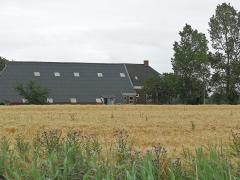Trends and geographic variation in adverse impacts of nitrogen use in Europe on human health, climate, and ecosystems: A review
This study assesses the effects of reactive nitrogen (N) pollution on human health, climate, and ecosystems in Europe from 1990 to 2019. It reports temporal and spatial variation in nitrogen-related indicators for air, soil, and water quality. This research updates findings from the first European Nitrogen Assessment published in 2011.

Aaldrik Tiktak
Decrease in N deposition, but critical loads still exceeded most ecosystems
Between 1990 and 2019, emissions of nitrogen oxide (NOx) have decreased by 57% and ammonia (NH3) emissions by 27%. This reduced N-deposition on terrestrial ecosystems by 36% and decreased the exceedance of critical N loads by 60%. However, the total area of ecosystems receiving excess nitrogen has only decreased by approximately 10%.
Substantial improvement of air quality, remaining concerns about human health
Lower NOx emissions have reduced regional NOx concentrations and nitrogen-induced particulate matter by up to 50%. However, improvements in harmful ozone levels caused by NOx have been smaller, with only a 15-20% reduction.
Modest improvement for aquatic water quality and ecosystems
Nitrogen inputs to agriculture stayed relatively constant over the last two decades. This explains that nitrate concentrations in groundwater and N concentrations in surface waters and coastal waters only decreased modestly over this period. Many aquatic ecosystems continue to suffer from too much nitrogen, affecting freshwater biodiversity and causing problems like algal blooms in coastal waters.
Authors
Specifications
- Publication title
- Trends and geographic variation in adverse impacts of nitrogen use in Europe on human health, climate, and ecosystems: A review
- Publication date
- 28 April 2024
- Publication type
- Article
- Page count
- 48
- Publication language
- English
- Magazine
- Earth-Science Reviews
- Issue
- 253 (2024) 104789
- Product number
- 5548




